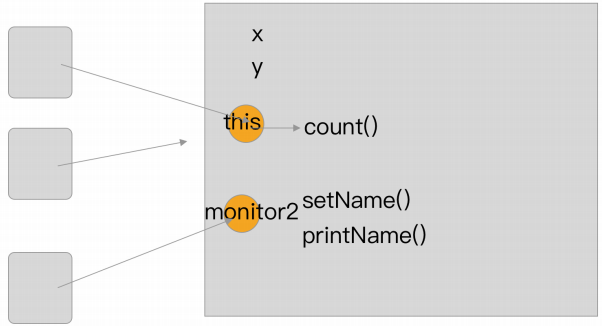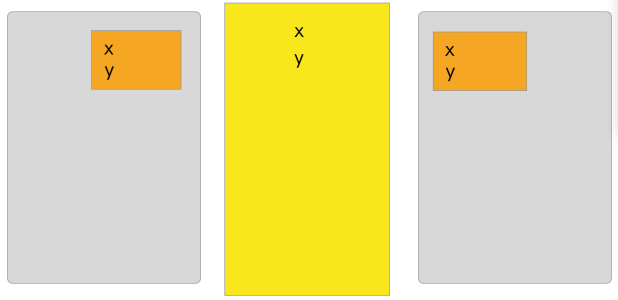Java多线程和线程同步
进程和线程
进程和线程
- 操作系统中运行多个软件
- 一个运行中的软件可能包含多个进程
- 一个运行中的进程可能包含多个线程
CPU线程和操作系统线程
- CPU线程
- 多核CPU的每个核各自独立运行,因此每个核一个线程
- “四核八线程”:CPU硬件方在硬件级别对CPU进行了一核多线程的支持(本质上依然是每个核一个线程)
- 单核CPU也可以运行多线程操作系统
- CPU线程
线程是什么:按代码顺序执行下来,执行完毕就结束的一条线
UI线程为什么不会结束?
因为它在初始化完毕后会执行死循环,循环的内容是刷新界面
多线程的使用
Thread 和 Runnable
Thread
1
2
3
4
5
6
7Thread thread = new Thread(){
public void run(){
System.out.println("Thread started!");
}
};
thread.start();Runnable
1
2
3
4
5
6
7
8Runnable runnable = new Runnable(){
public void run(){
System.out.println("Thread with Runnable started!");
}
};
Thread thread = new Thread(runnable);
thread.start();ThreadFactory
1
2
3
4
5
6
7
8
9
10
11
12
13
14
15
16
17
18ThreadFactory factory = new ThreadFactory(){
int count = 0;
public Thread newThread(Runnable r){
count++;
return new Thread(r, "Thread - " + count);
}
};
Runnable runnable = new Runnable(){
public void run(){
System.out.println("Thread.currentThread().getName() " + " started!");
}
}
Thread thread = factory.newThread(runnable);
thread.start();
Thread thread1 = factory.newThread(runnable);
thread1.start();Executor 和线程池
常用:
newCachedThreadPool()1
2
3
4
5
6
7
8
9
10Runnable runnable = new Runnable(){
public void run(){
System.out.println("Thread with Runnable started!");
}
};
Executor executor = Executors.newCachedThreadPool();
executor.execute(runnable);
executor.execute(runnable);
executor.execute(runnable);短时批量处理:
newFixedThreadPool()1
2
3
4
5ExecutorService executor = Executors.newFixedThreadPool(20);
for(Bitmap bitmap: bitmaps){
executor.execute(bitmapProcessor(bitmap));
}
executor.shutdown();
Callable 和 Future
1
2
3
4
5
6
7
8
9
10
11
12
13
14
15
16
17
18
19Callable<String> callable = new Callable<String>(){
public String call(){
try{
Thread.sleep(1500);
} catch (InterruptedException e){
e.printStackTrace();
}
return "Done!";
}
};
ExecutorService executor = Executors.newCachedThreadPool();
Future<String> future = executor.submit(callable);
try{
String result = future.get();
System.out.println("result: " + result);
} catch (InterruptedException | ExecutionException e){
e.printStackTrace();
}
线程同步和线程安全
synchronized
synchronized 方法
1
2
3
4
5
6
7private synchronized void count(int newValue){
x = newValue;
y = newValue;
if(x != y){
System.out.println("x: " + x + " , y: "+ y);
}
}synchronized 代码块
1
2
3
4
5
6
7
8
9private void count(int newValue){
synchronized(this){
x = newValue;
y = newValue;
if(x != y){
System.out.println("x: " + x + " , y: "+ y);
}
}
}1
2
3
4
5synchronized(monitor1){
synchronized(monitor2){
name = x + "-" + y;
}
}synchronized 的本质
保证方法内部或代码块内部资源(数据)的互斥访问。即同一时间、由同一个Monitor监视的代码,最多只能有一个线程在访问

保证线程之间对监视资源的数据同步。即,任何线程在获取到
Monitor后的第一时间,会先将共享内存中的数据复制到自己的缓存中;任何线程在释放Monitor的第一时间,会先将缓存中的数据复制到共享内存中。
volatile- 保证加了
volatile关键字的字段的操作具有原子性和同步性,其中原子性相当于实现了针对单一字段的线程间互斥访问。因此volatile可以看作简化版的synchronized。 volatile只对基本类型(byte、char、short、int、long、float、double、boolean)的赋值操作和对象的引用赋值操作有效。
- 保证加了
java.util.concurrent.atomic包:下面有
AtomicIntegerAtomicBoolean等类,作用和volatile基本一致,可以看作是通用版的volatile。1
2
3AtomicInteger atomicInteger = new AtomicInteger(0);
//...
atomicInteger.getAndIncrement();
Lock / ReentrantReadWriteLock同样是“加锁”机制。但使用方式更灵活,同时也更麻烦一些。
1
2
3
4
5
6
7
8Lock lock = new ReentrantLock();
//...
lock.lock();
try{
x ++;
} finally{
lock.unlock();
}finally的作用:保证在方法提前结束或出现 Exception 的时候,依然能正常释放锁。
一般并不会只是使用
Lock,而是会使用更复杂的锁,例如ReadWriteLock:1
2
3
4
5
6
7
8
9
10
11
12
13
14
15
16
17
18
19
20
21
22
23
24
25ReentrantReadWriteLock lock = new ReentrantReadWriteLock();
Lock readLock = lock.readLock();
Lock writeLock = lock.writeLock();
private int x = 0;
private void count(){
writeLock.lock();
try{
x++;
} finally{
writeLock.unlock();
}
}
private void print(int time){
readLock.lock();
try {
for(int i = 0; i < tiem; i++){
System.out.print(x + " ");
}
System.out.println();
} finally {
readLock.unlock();
}
}
线程安全问题的本质:
在多个线程访问共同的资源时,在某一个线程对资源进行写操作的中途(写入已经开始,但还没结束),其他线程对这个写了一半的资源进行了读操作。或者基于这个写了一半的资源进行了写操作,导致出现数据错误。
锁机制的本质:
通过对共享资源进行访问限制,让同一时间只有一个线程可以访问资源,保证了数据的准确性。
不论是线程安全问题,还是针对线程安全问题所衍生出的锁机制,它们的核心都在于共享的资源,而不是某个方法或者某几行代码。